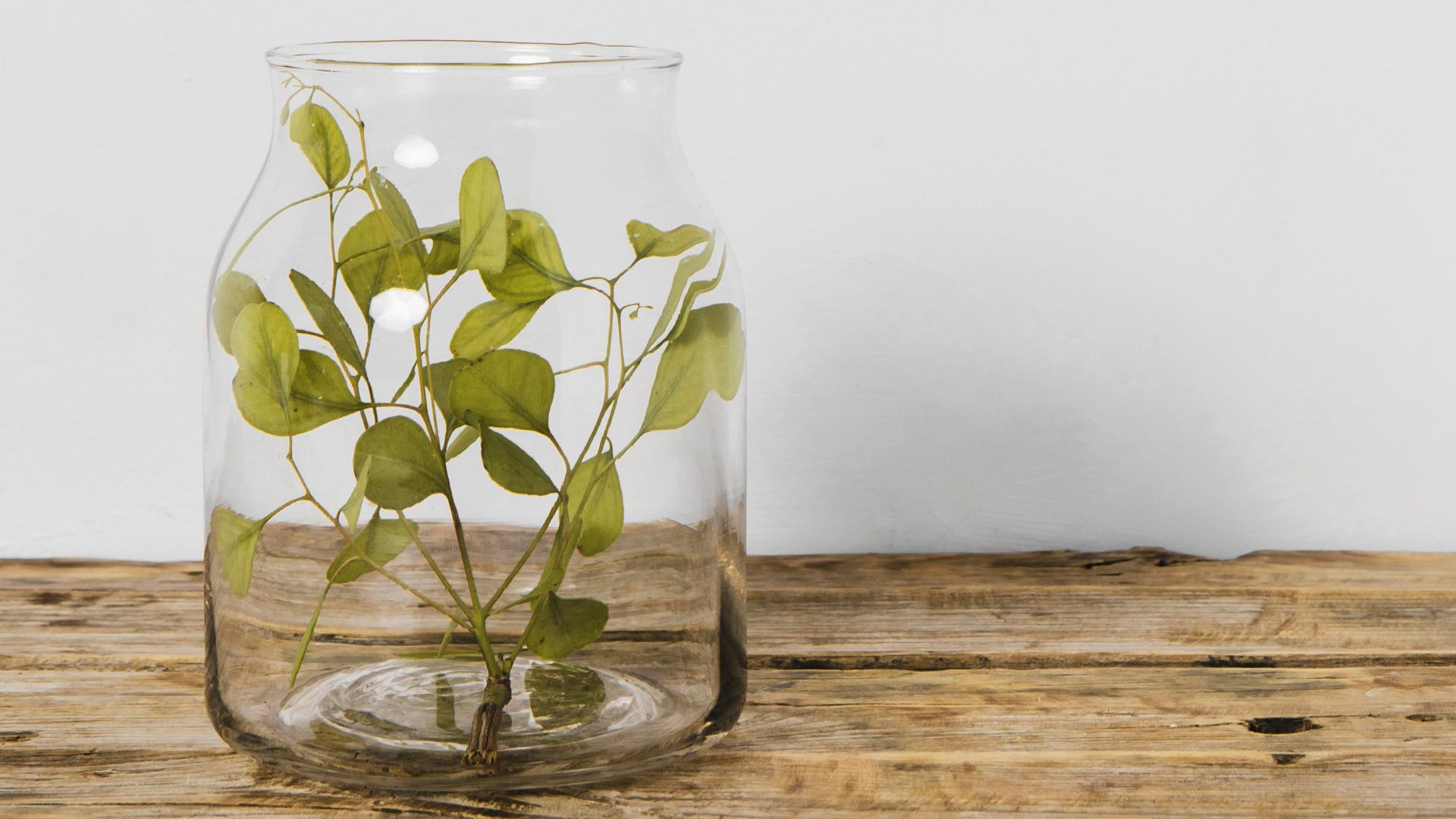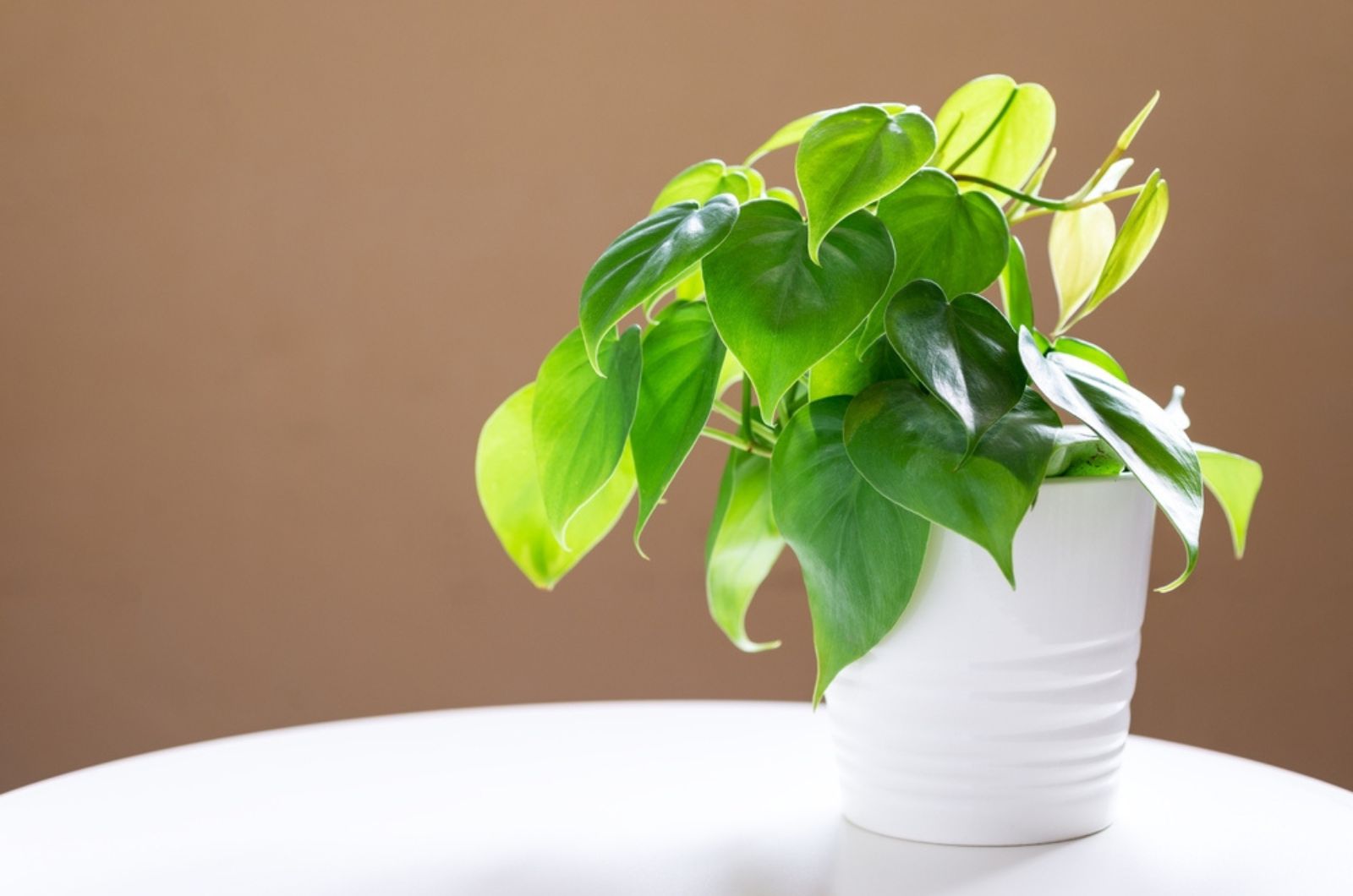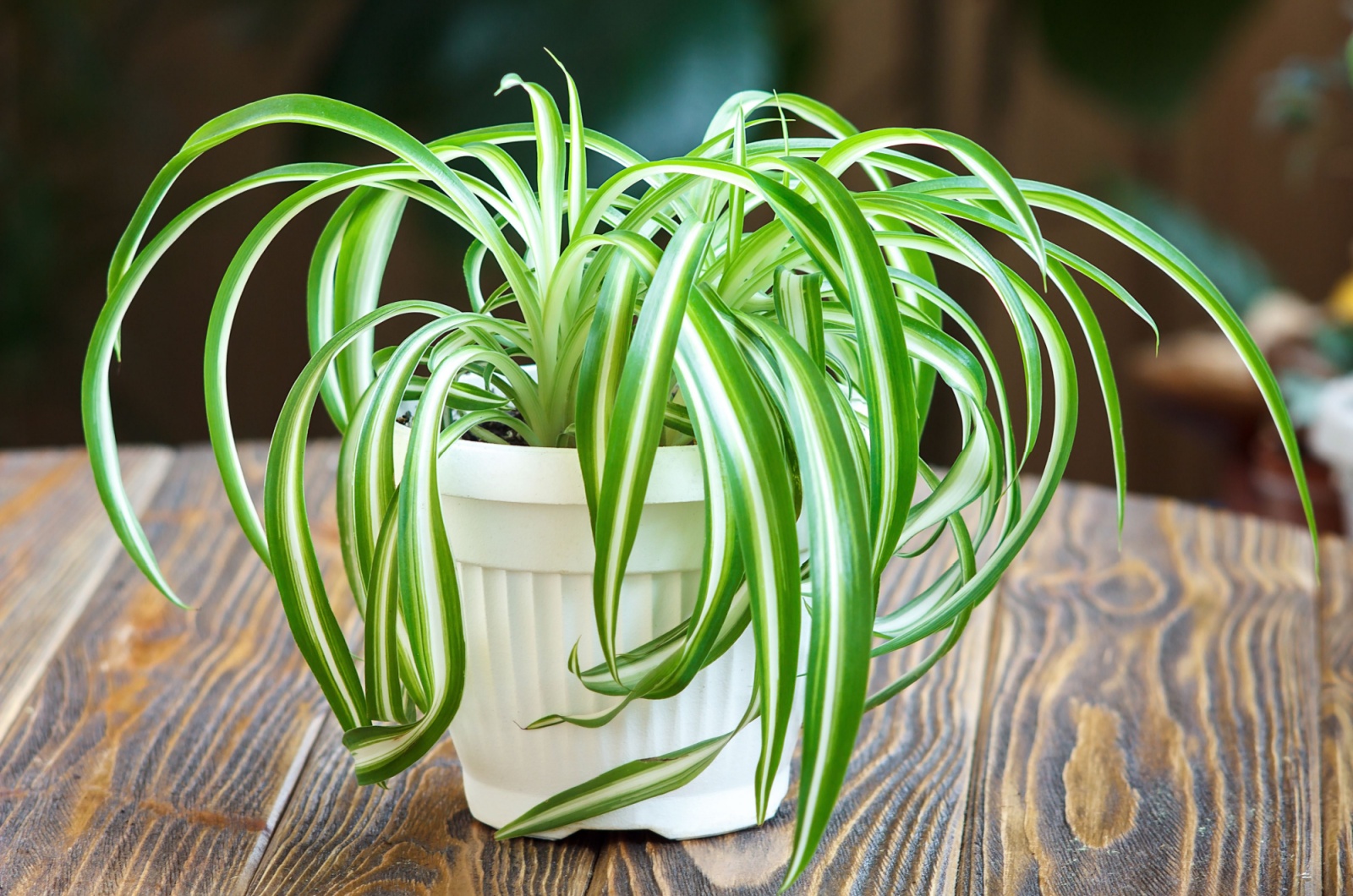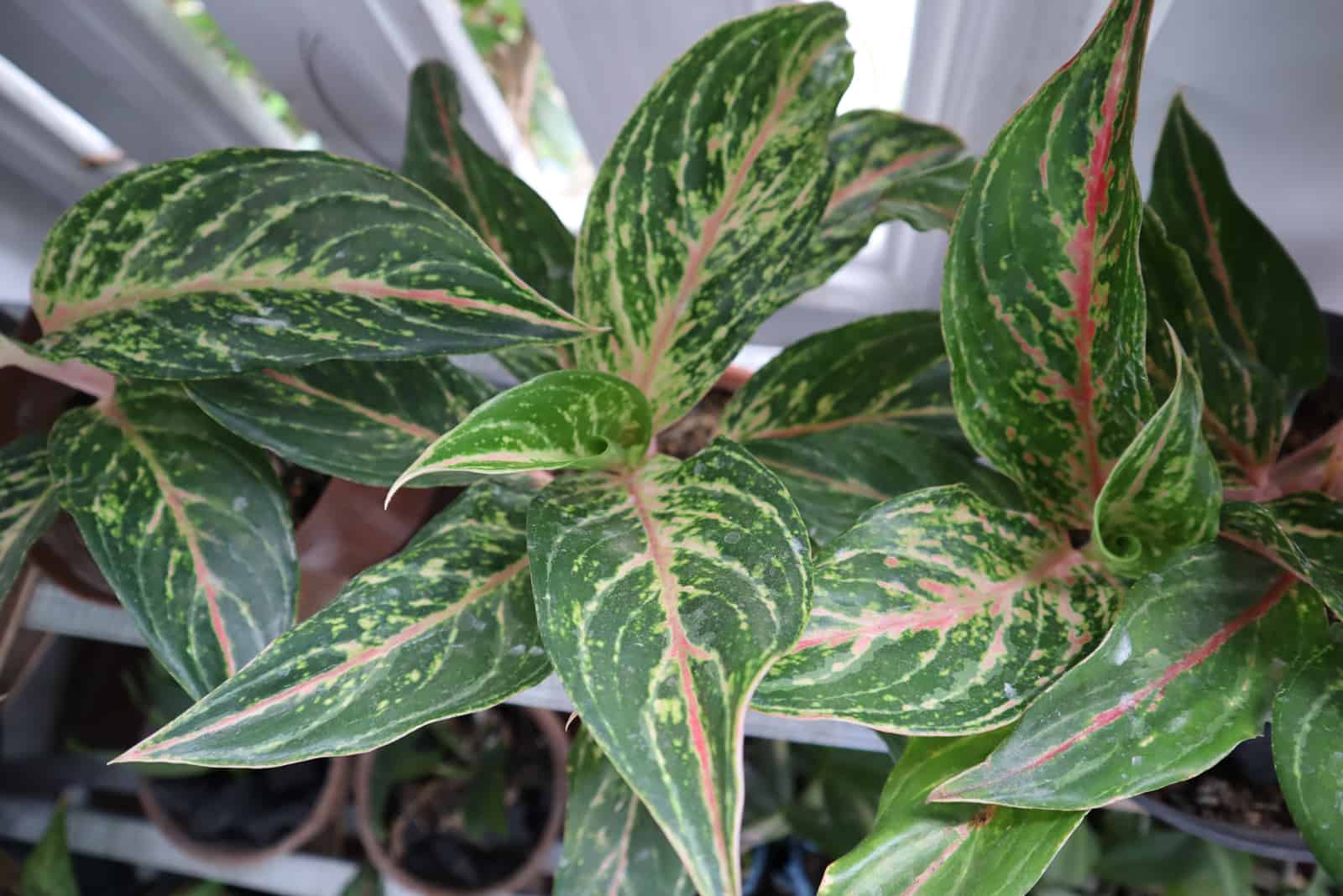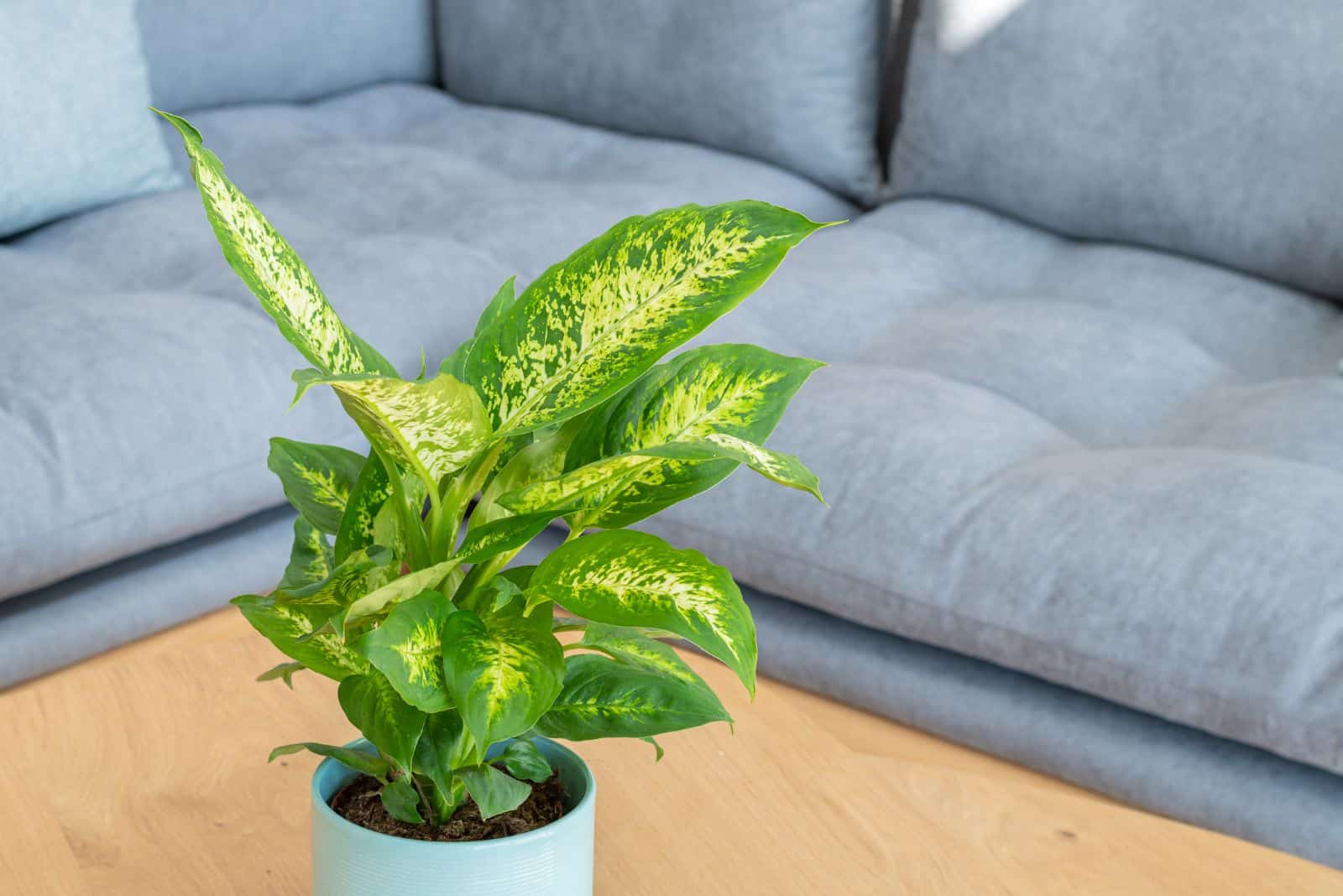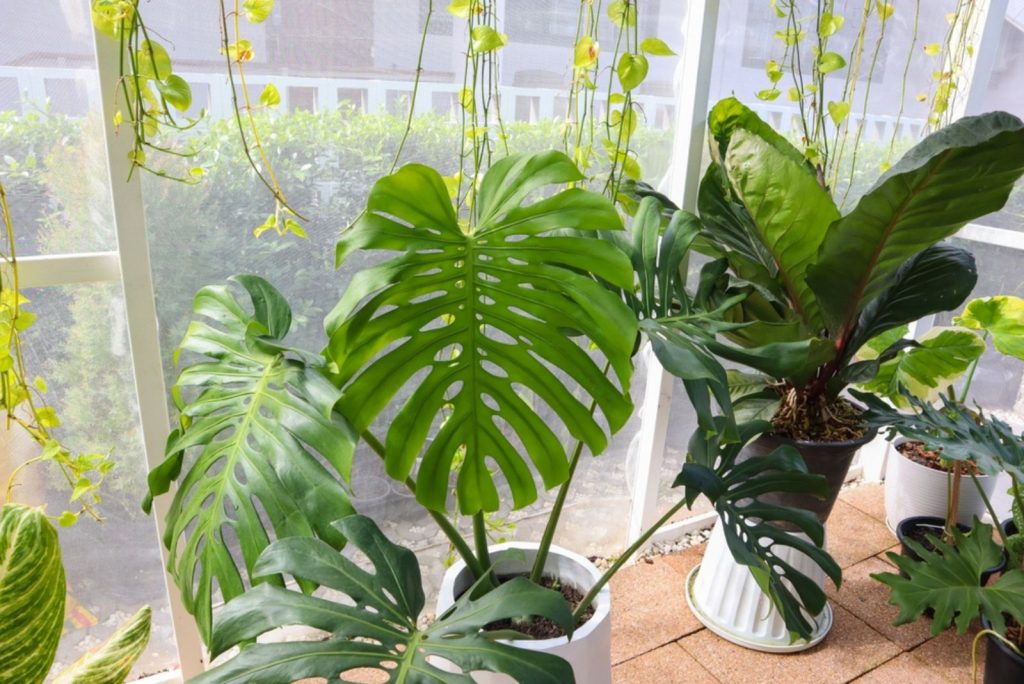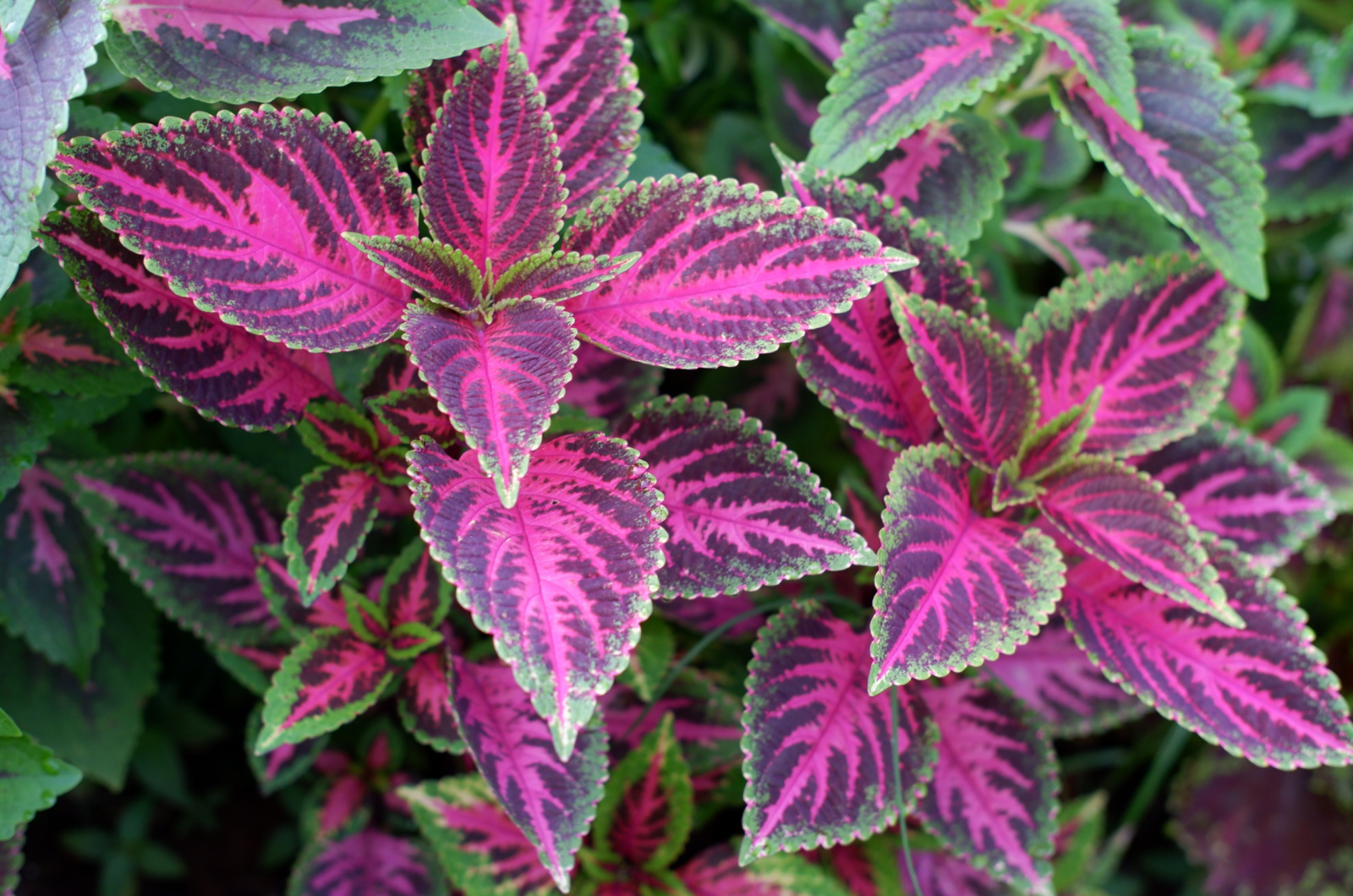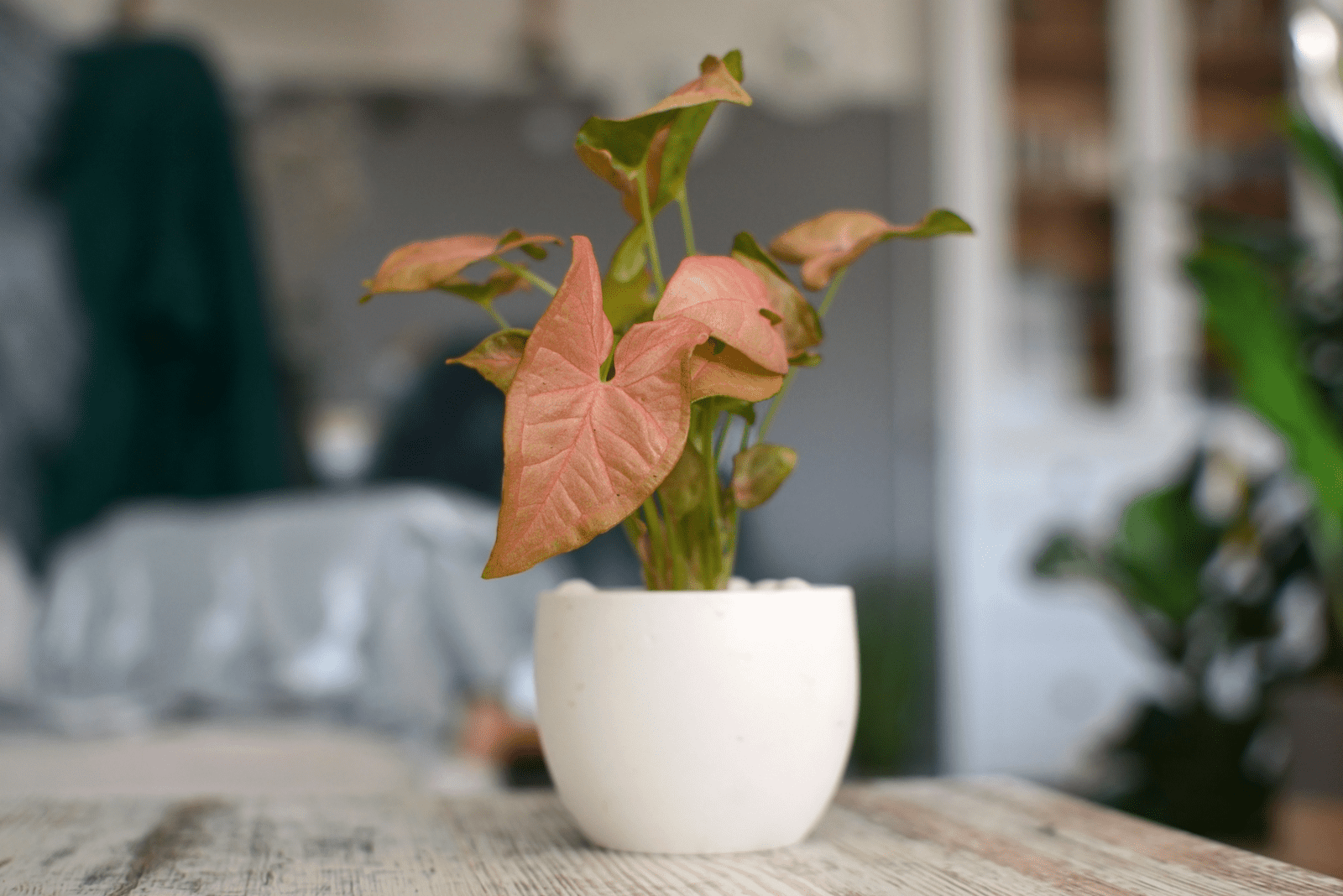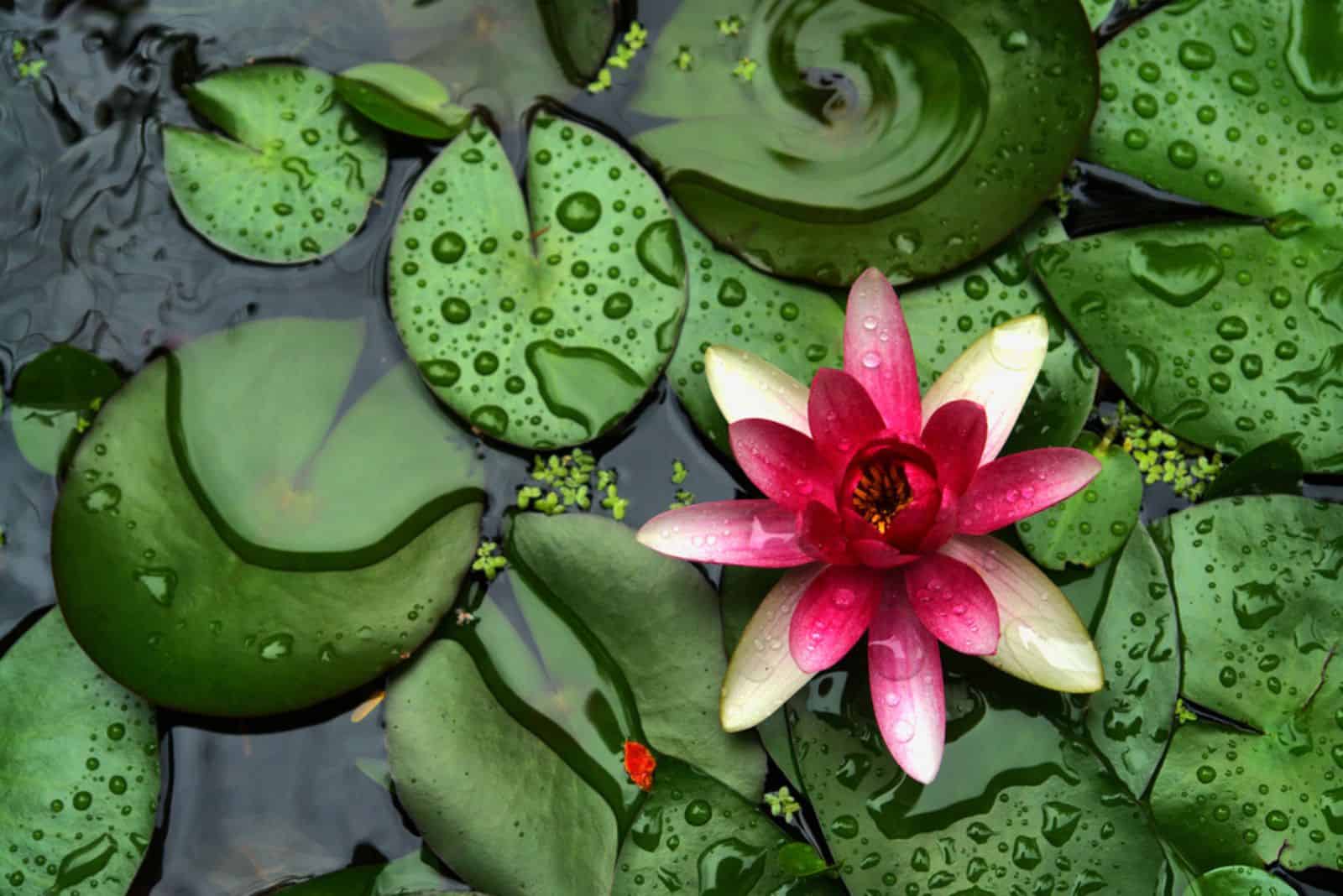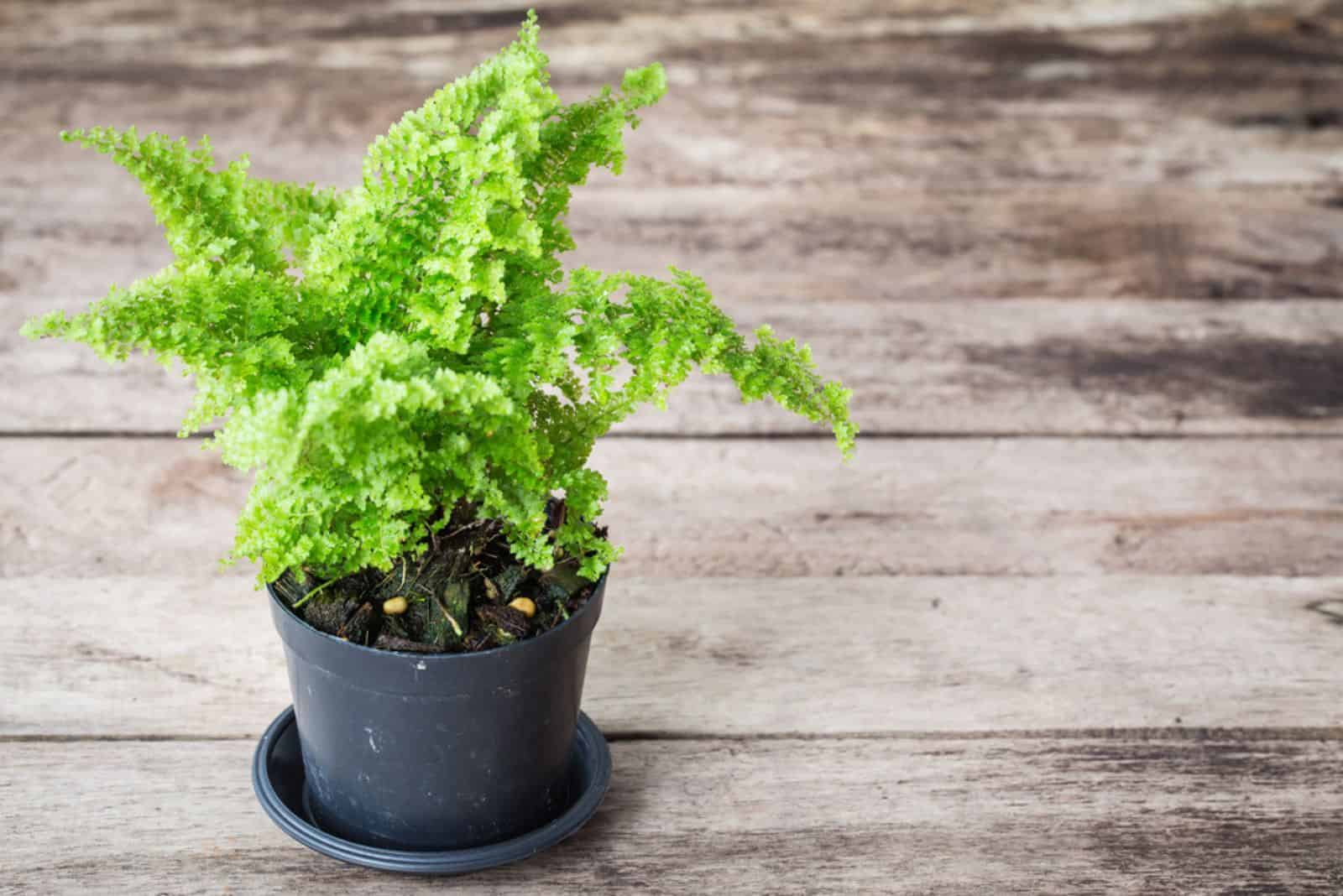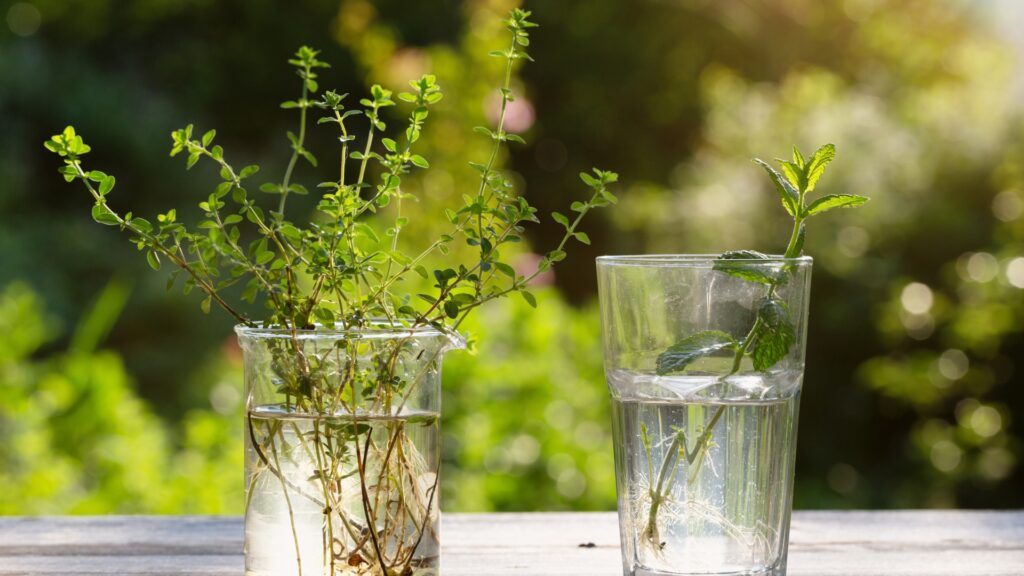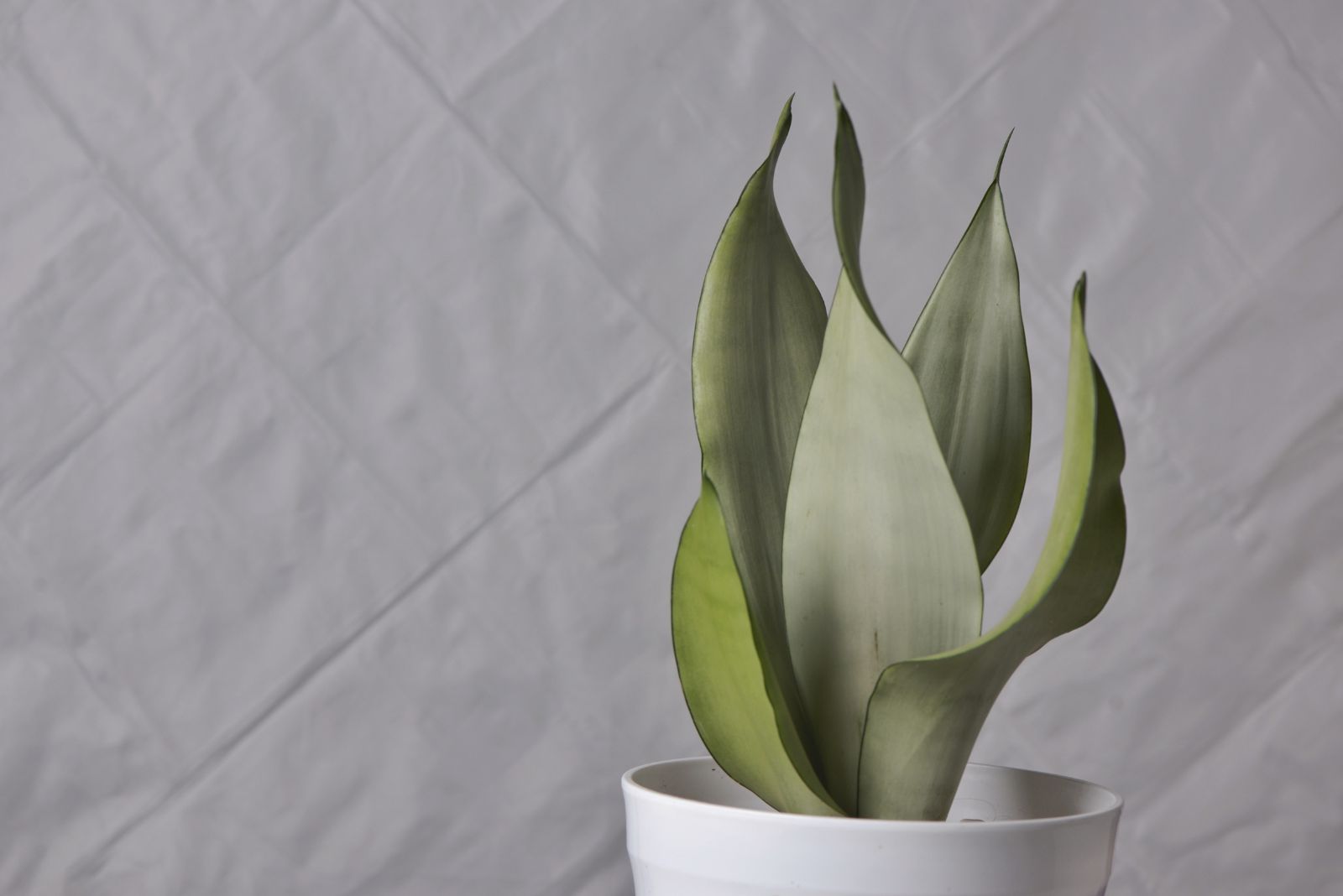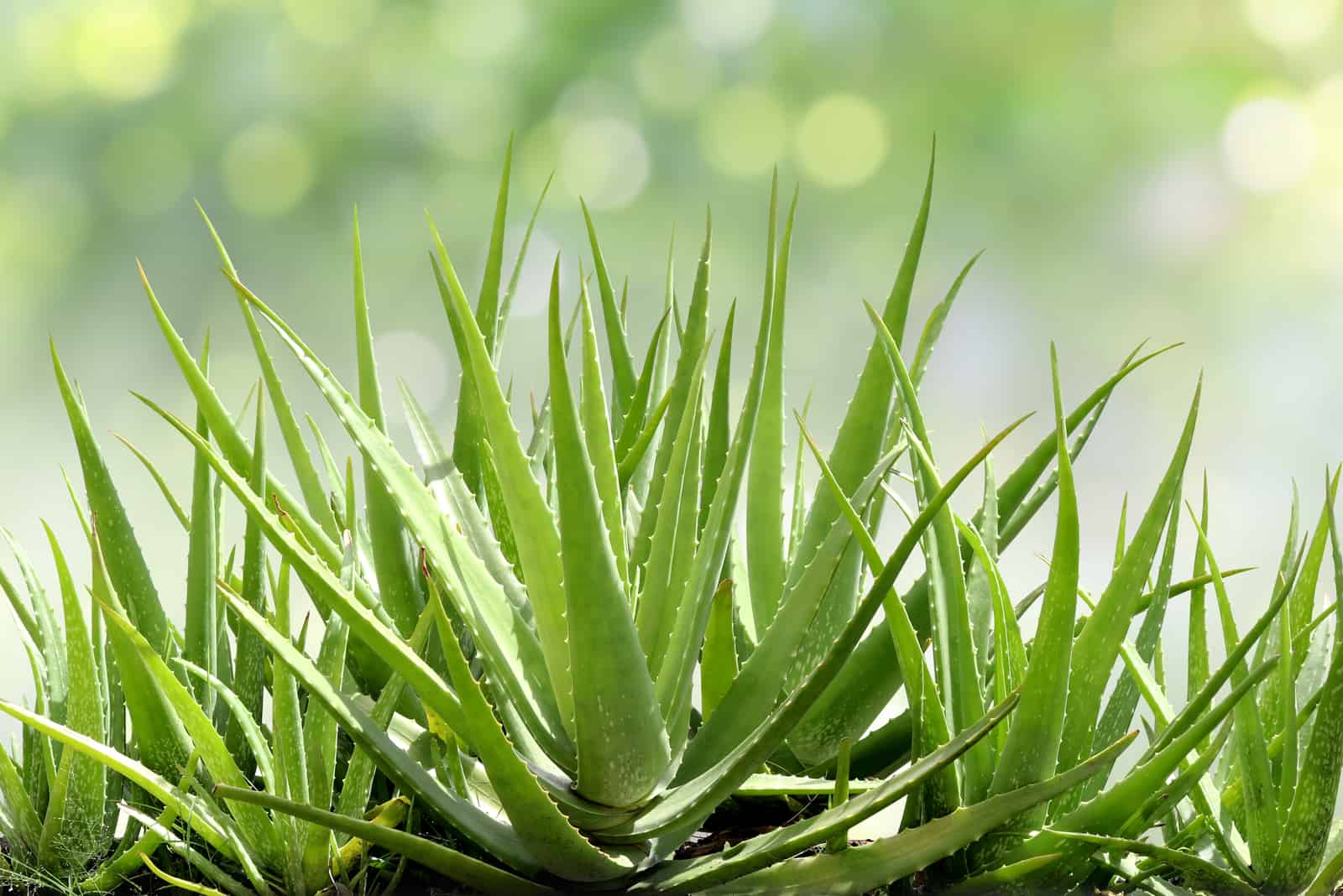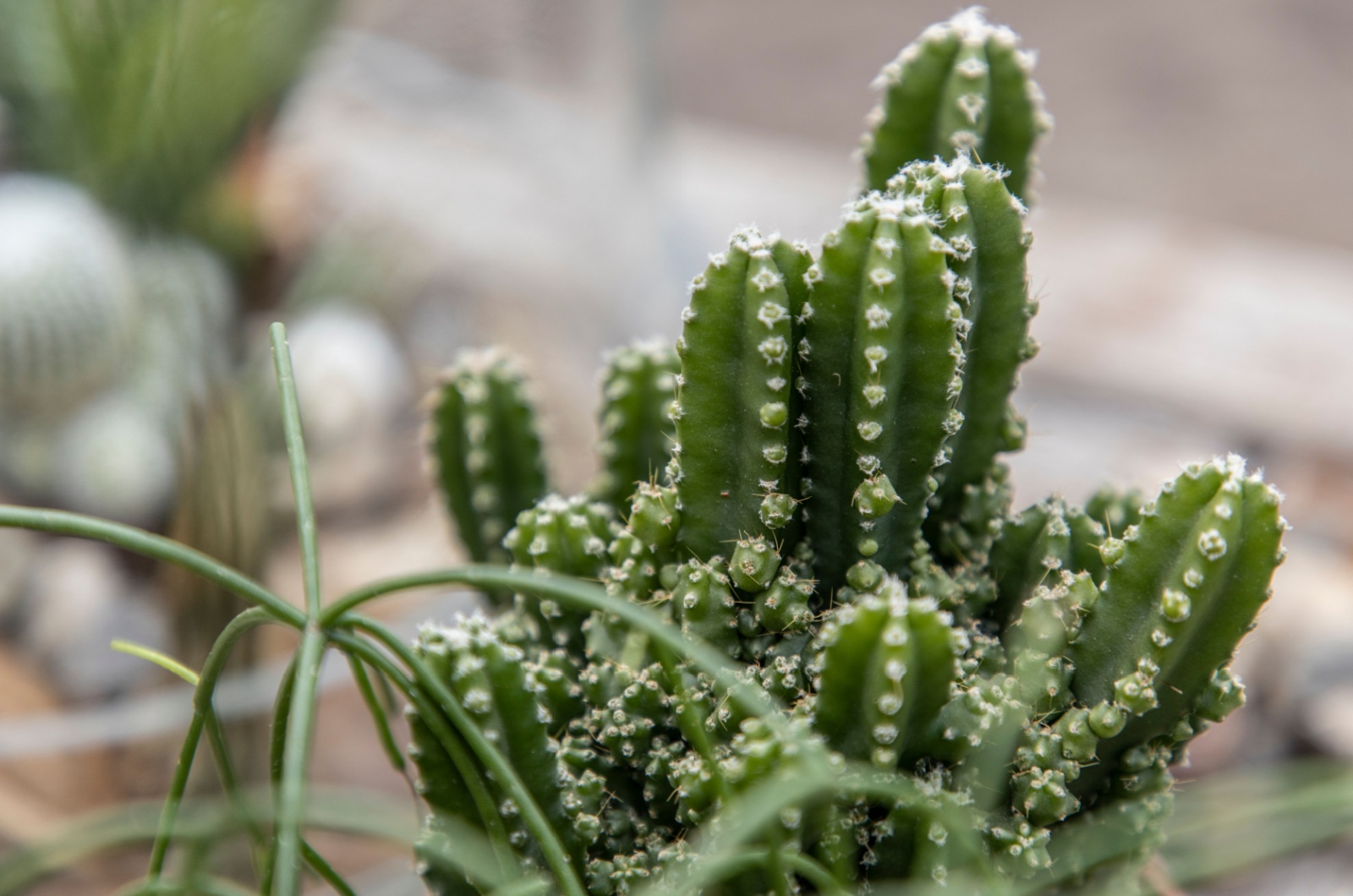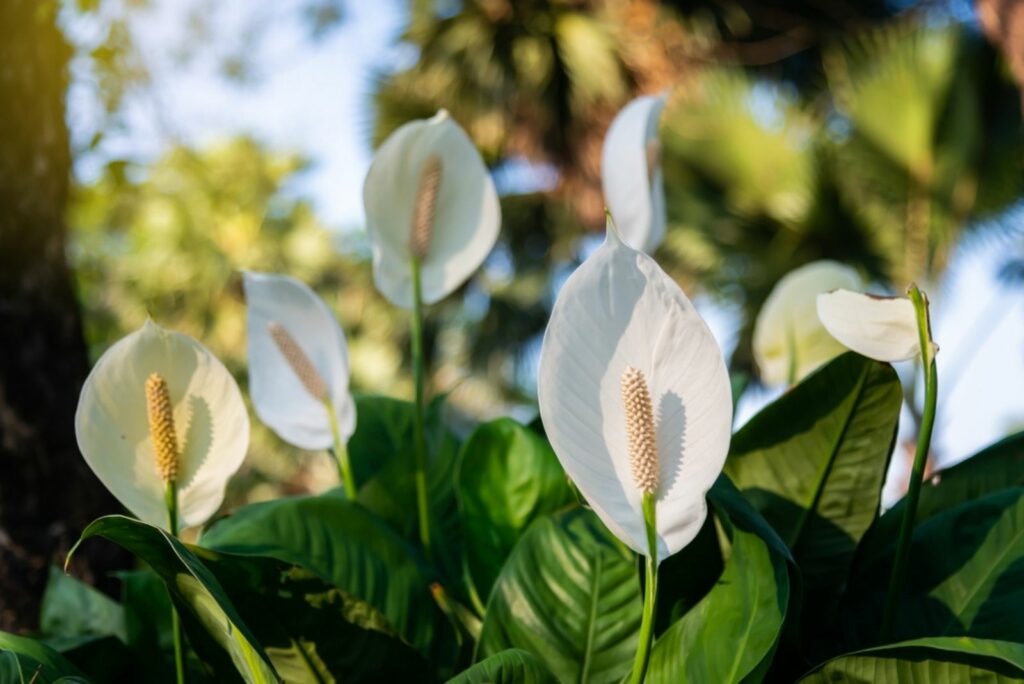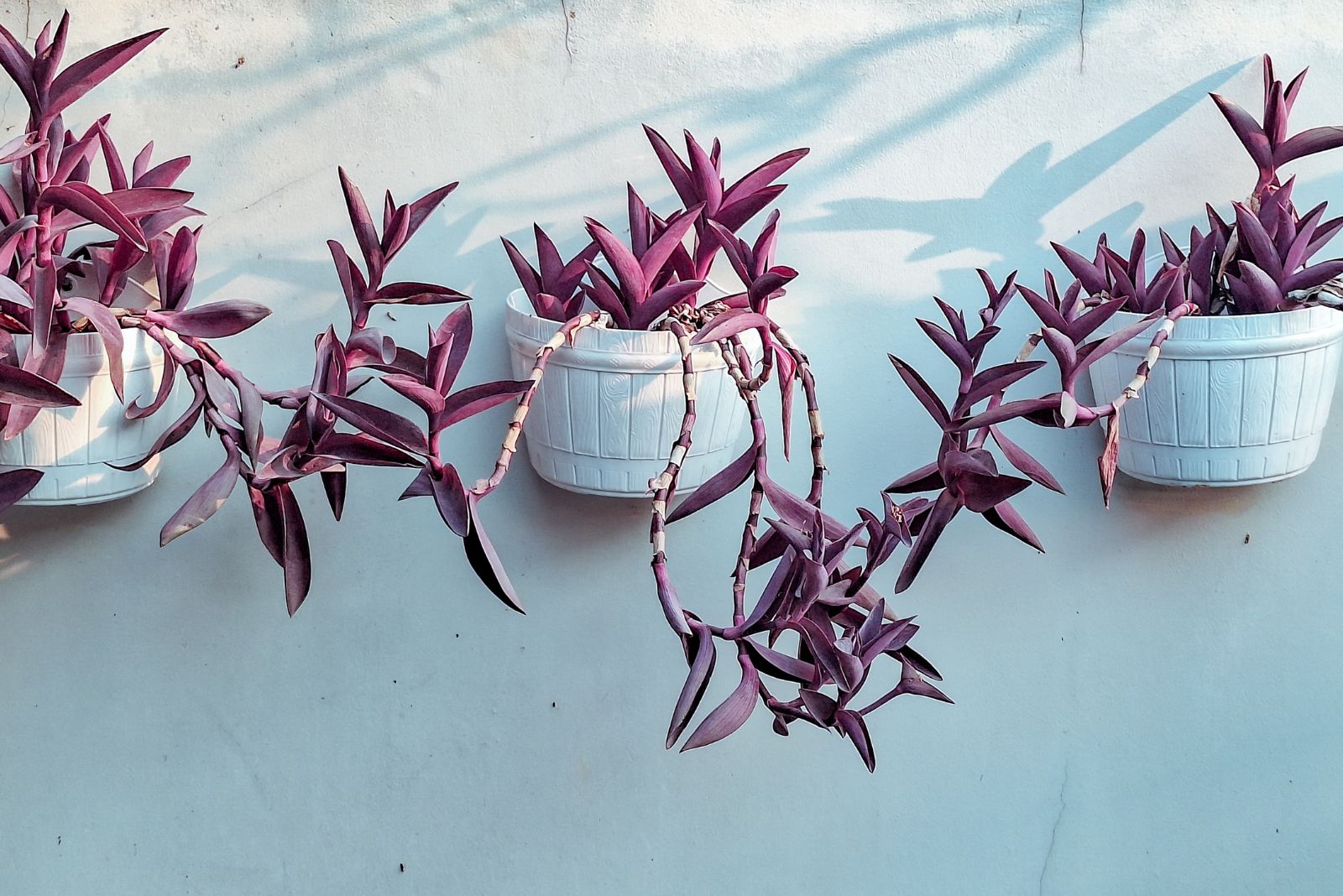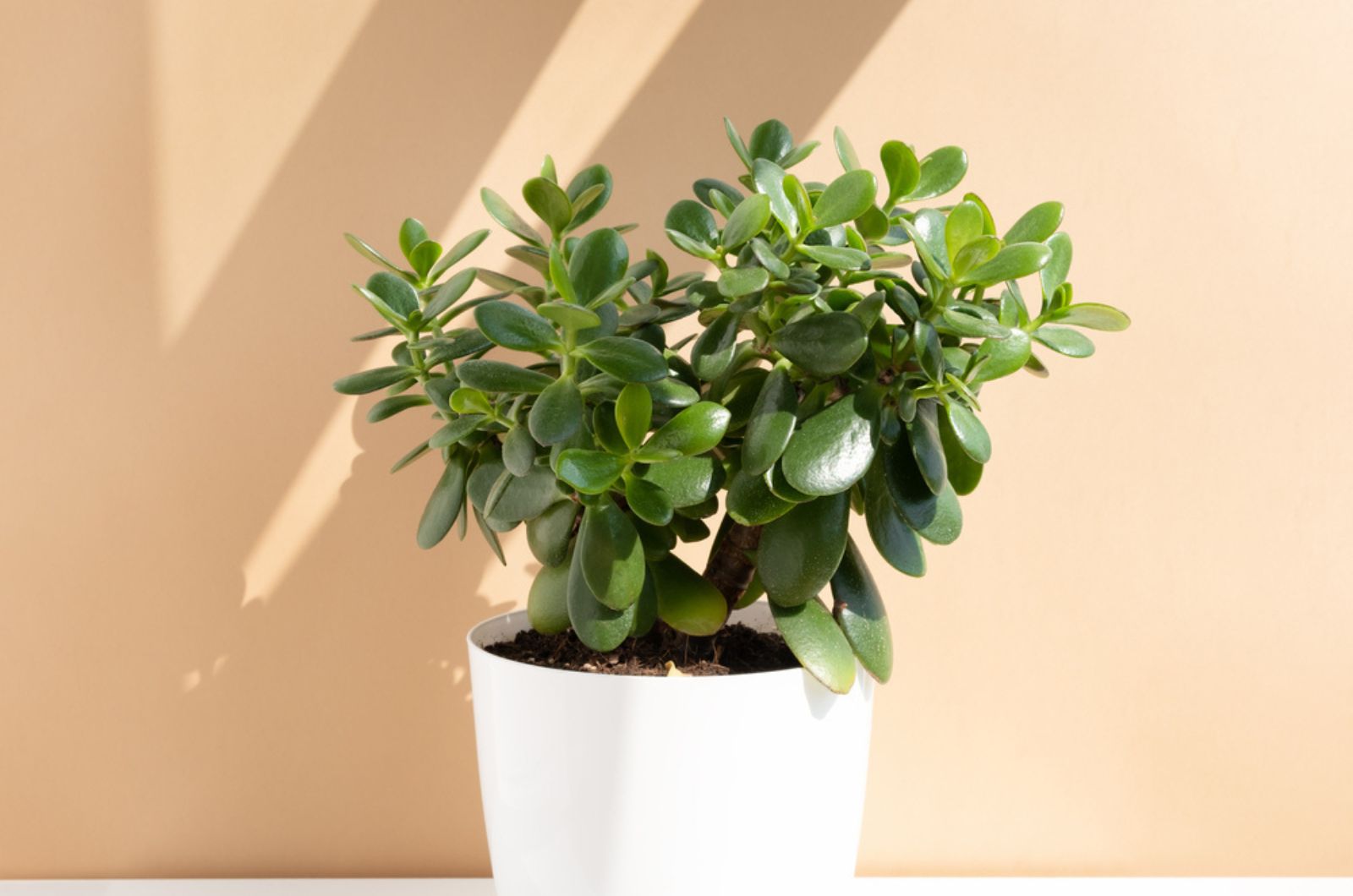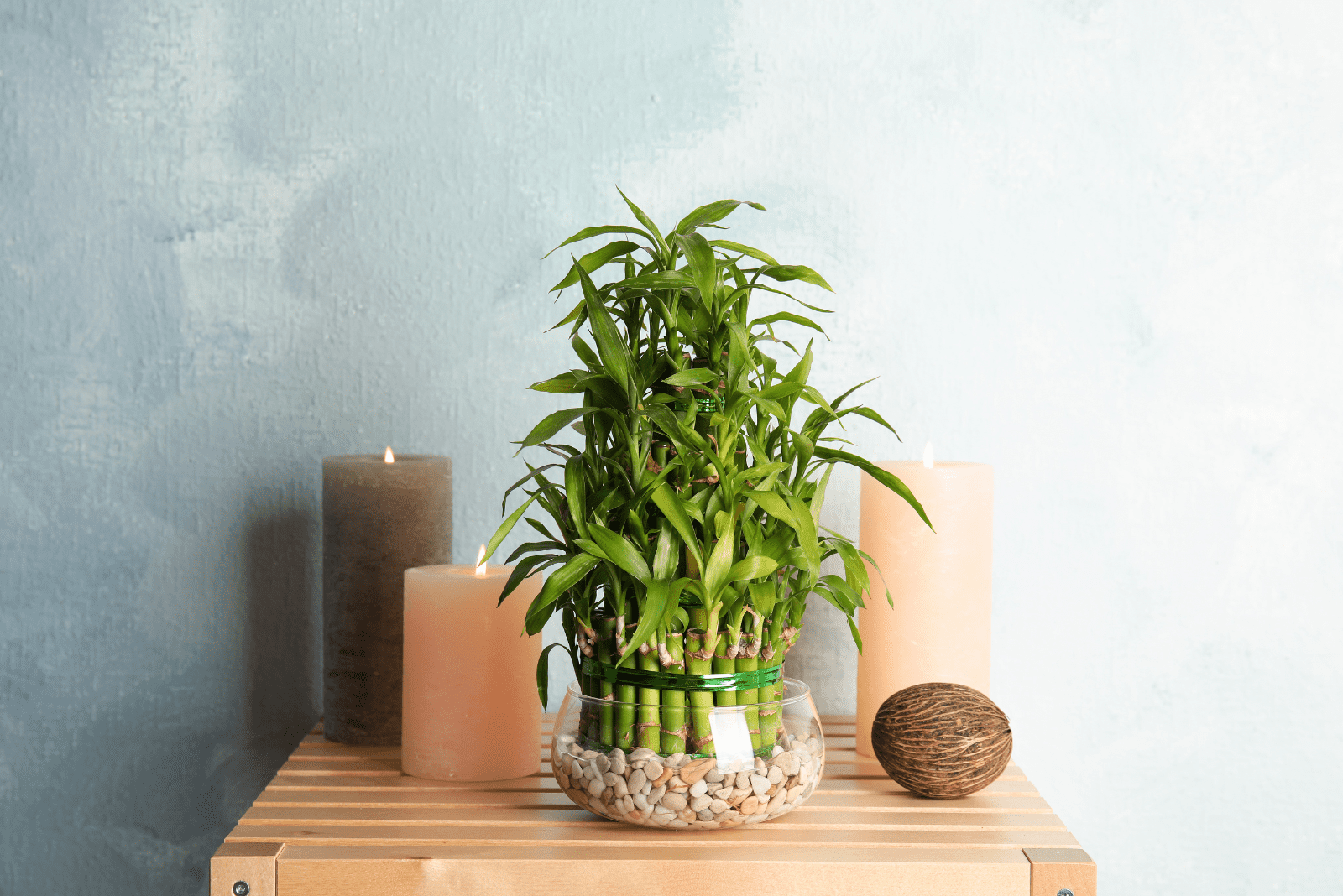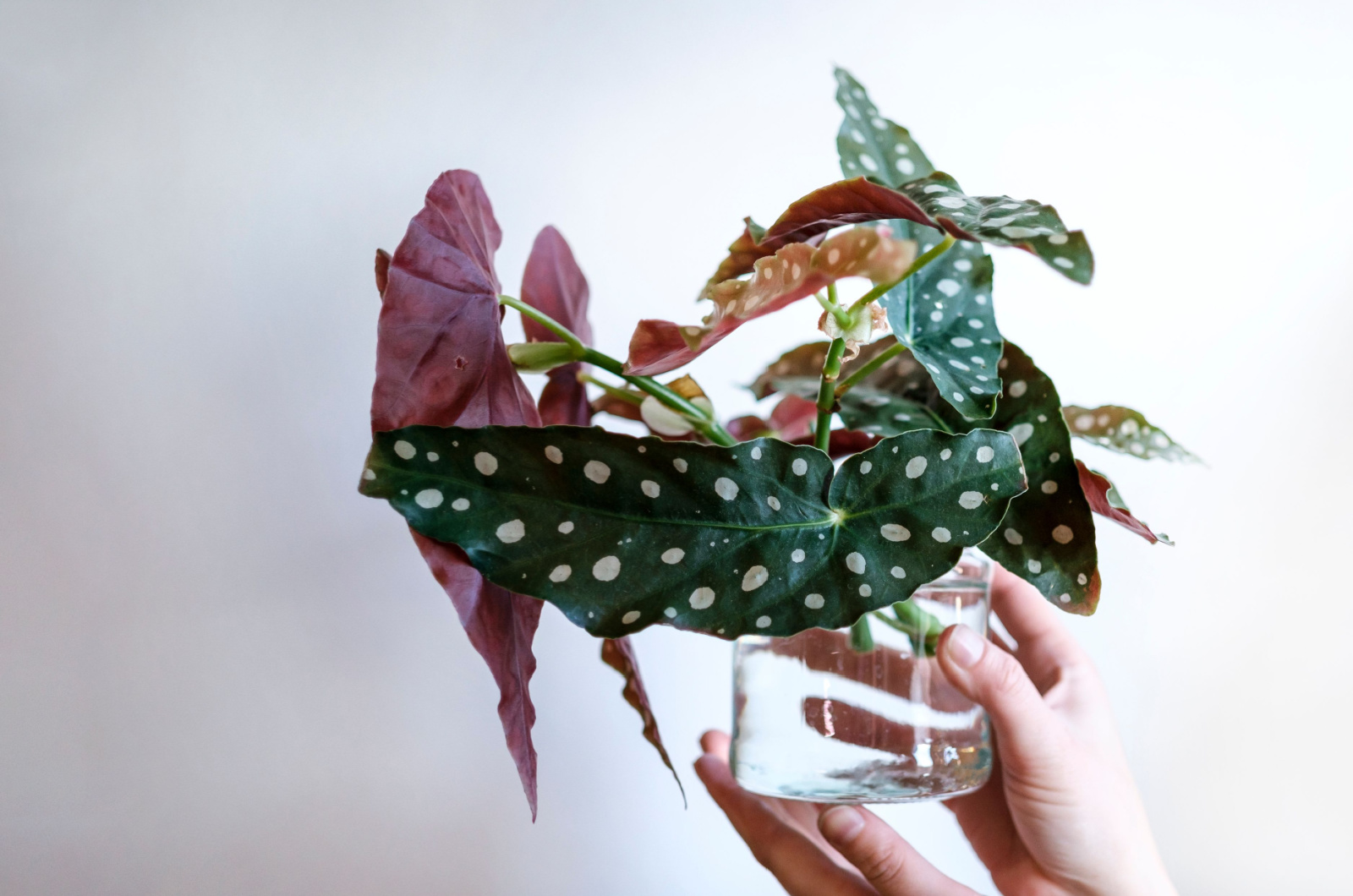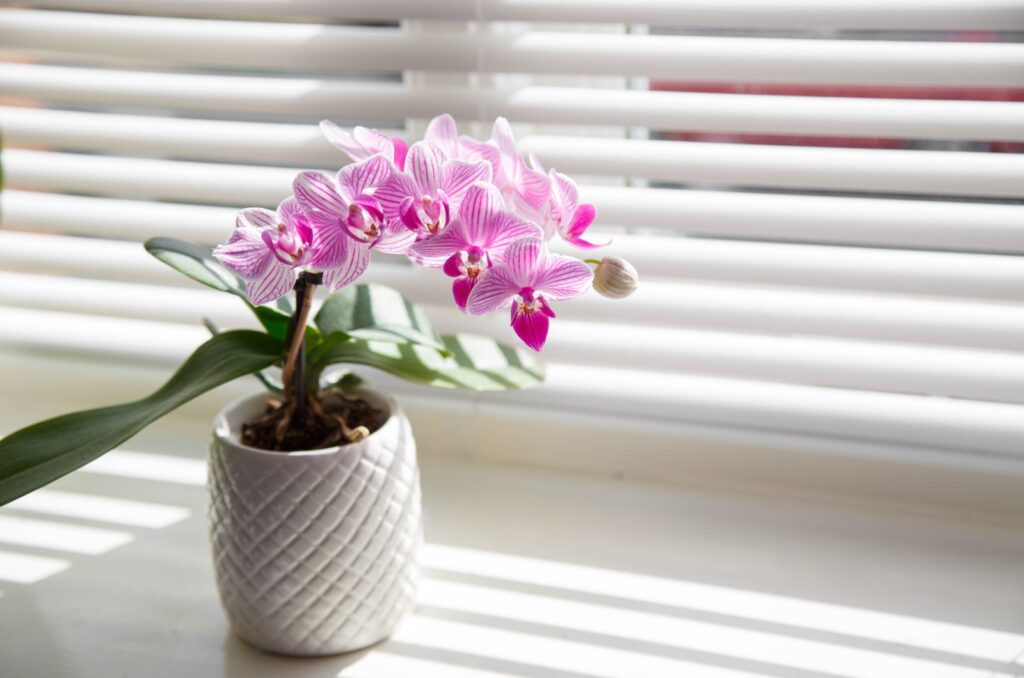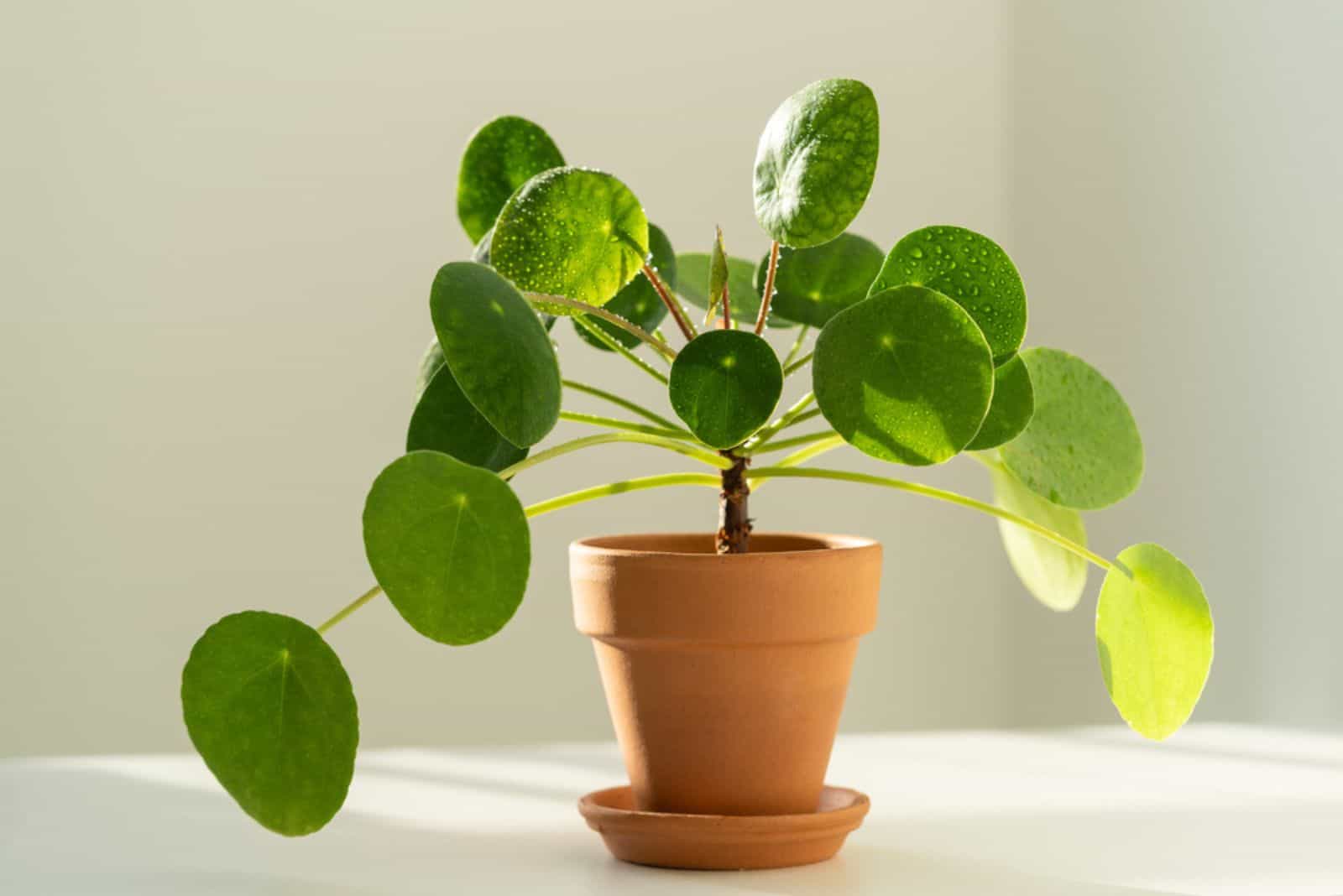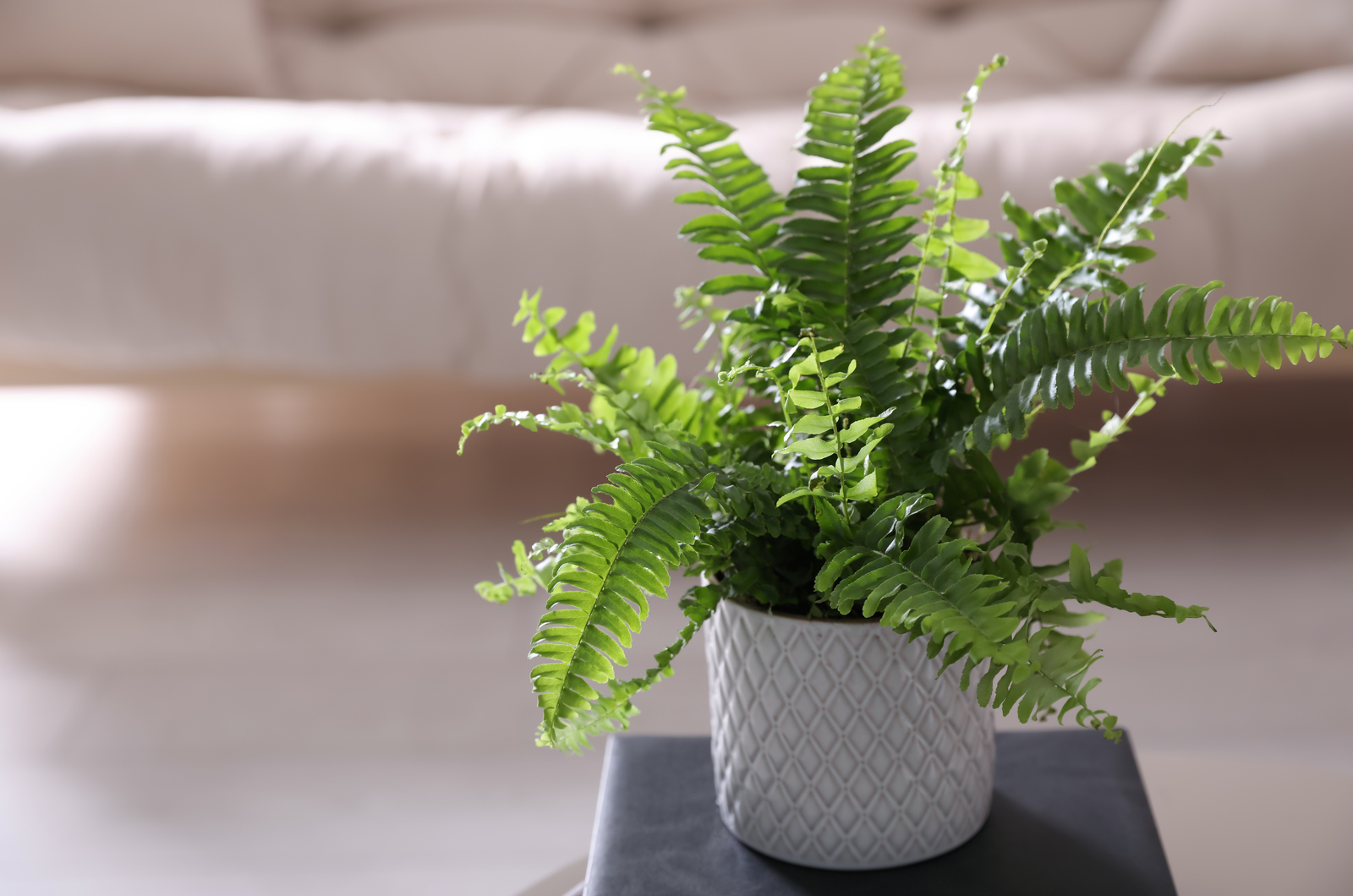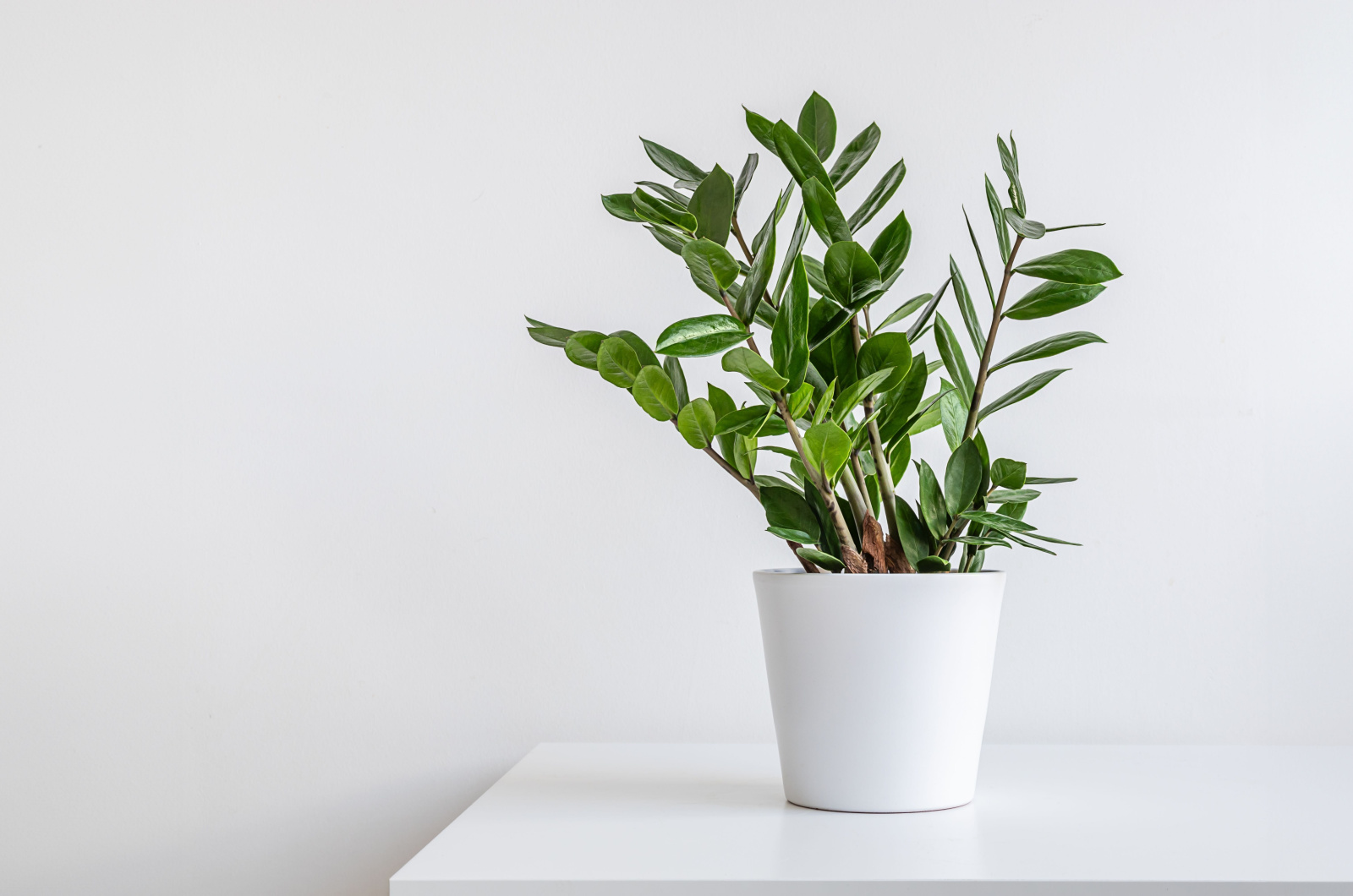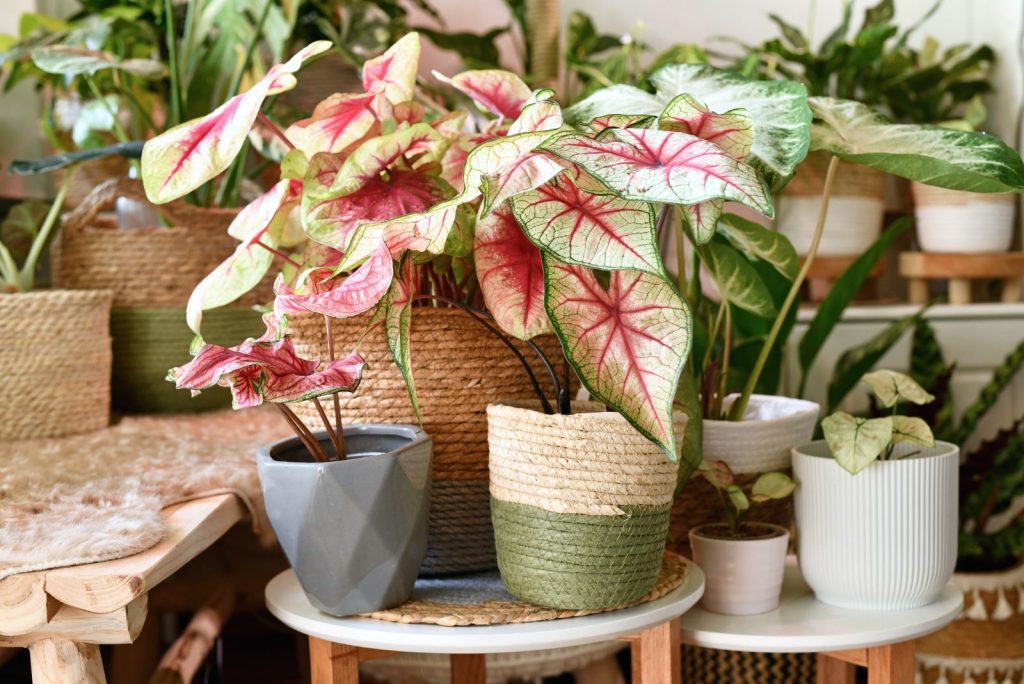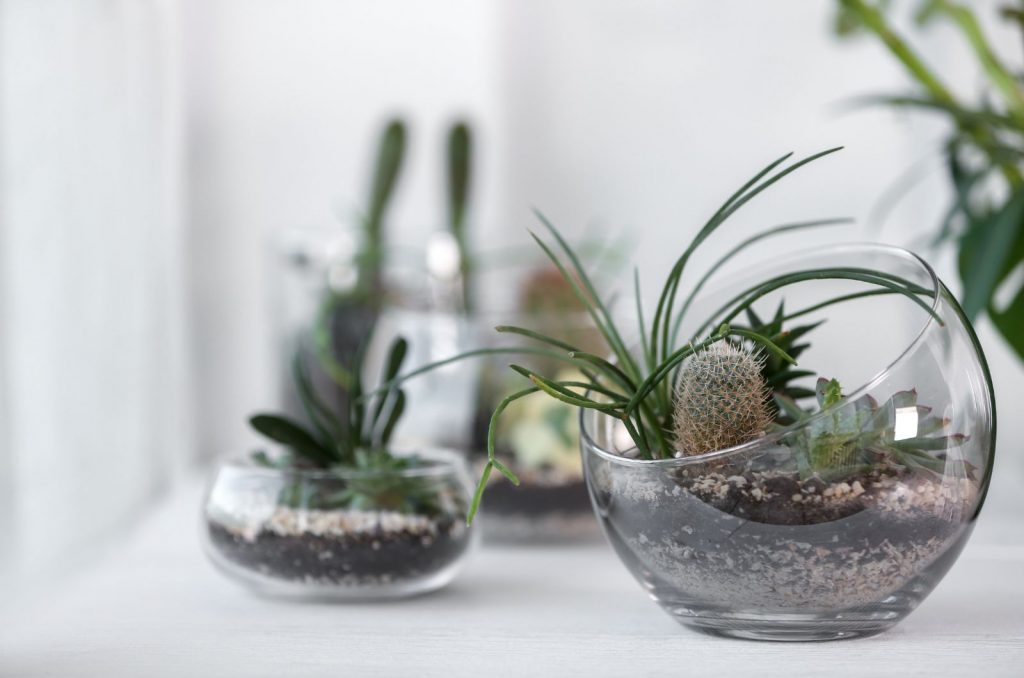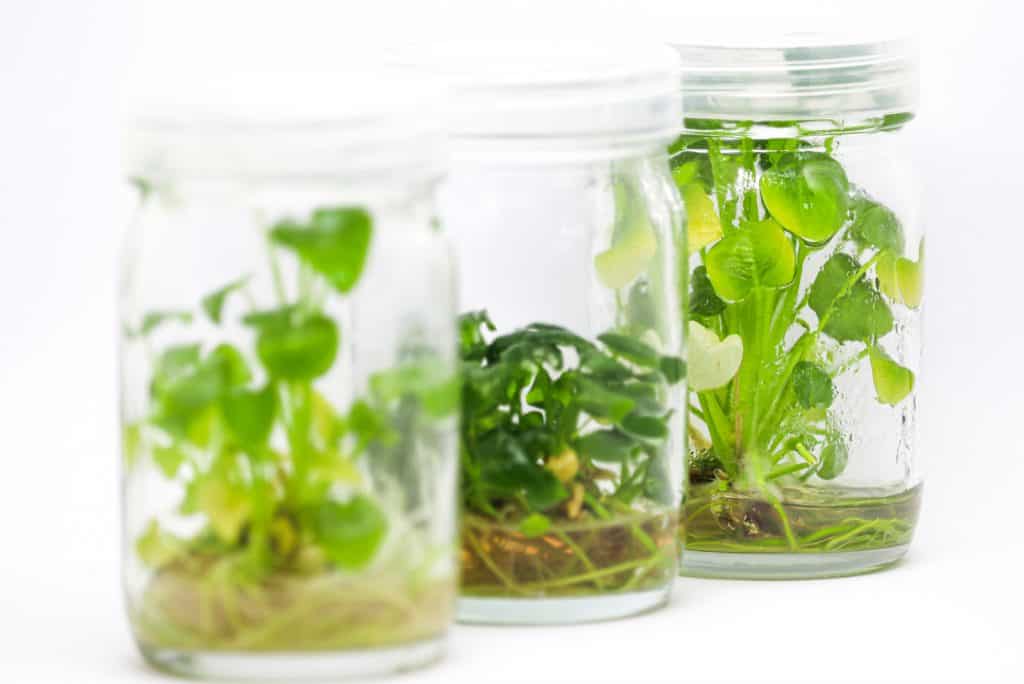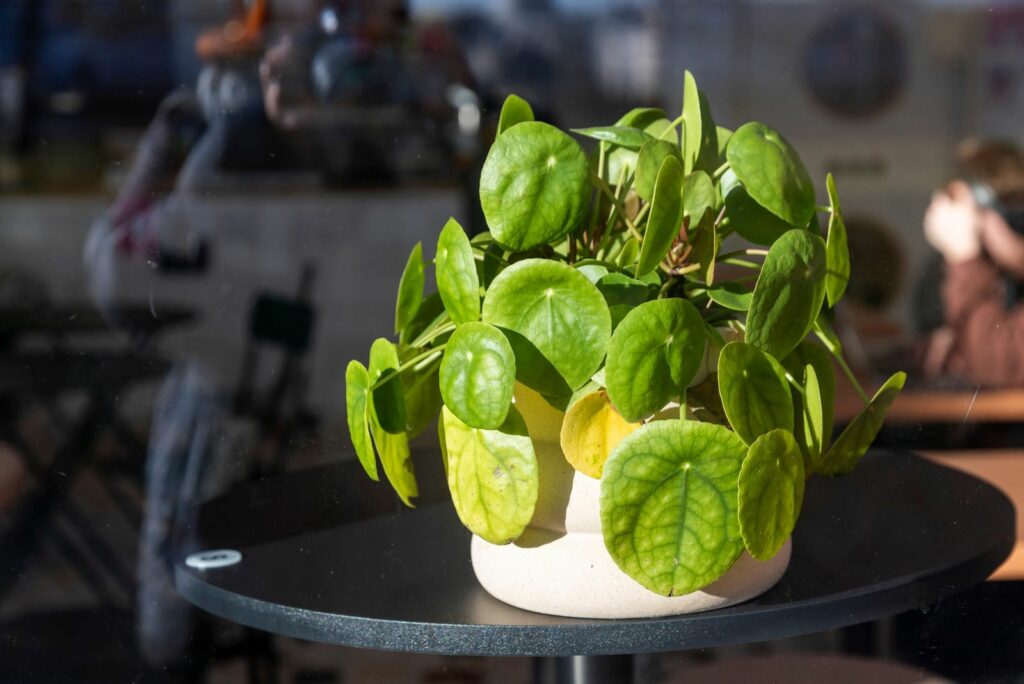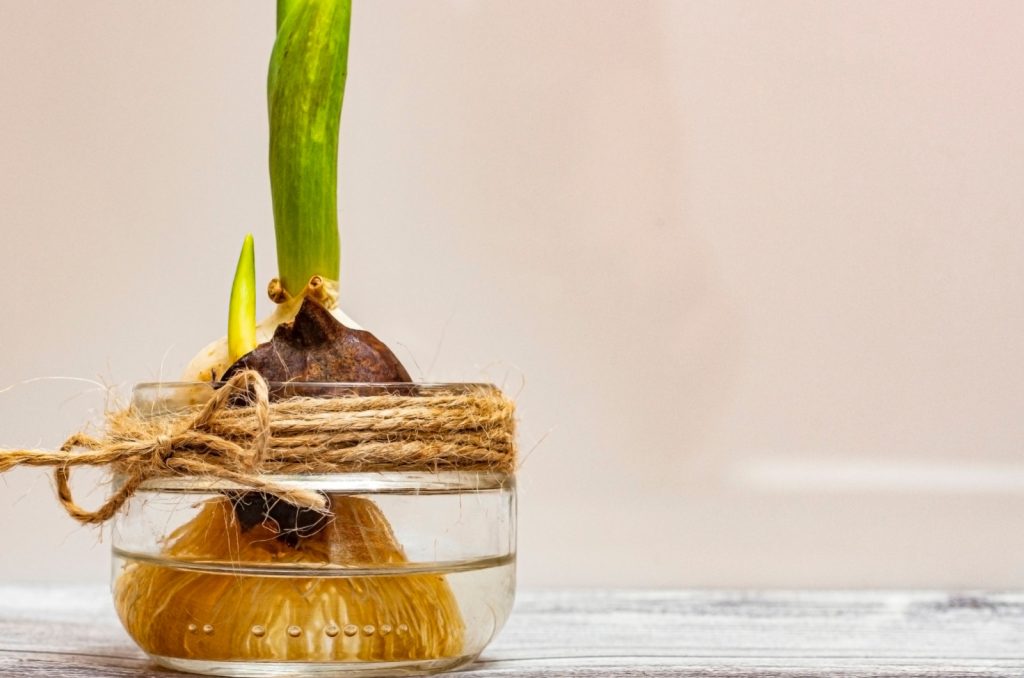Smaller apartments often narrow down our choices when it comes to plant species to grow. We may also get tired of standard ways of plant cultivation and look for something new and different.
A unique way to cultivate plants that’ll help you use limited space is growing plants in a glass jar.
I don’t even need to describe how pretty and amazing plants look when grown in glass jars. You can use soil or water as a growing medium; both look spectacular!
Of course, not all plant species can survive in this environment, which is why I made a list of the 27 best plants to grow in glass jars.
I’ll give you more details about each of these plants, and if it’s better to grow them in water or soil.
Let’s get started!
1. Philodendrons
People often think that Philodendrons are massive plants perfect for floor-standing containers. The truth is that some Philo species are enormous when mature, but there are also some specimens that are smaller and will only thrive if grown in water alone.
I recommend the Heart-Leaf Philodendron variety, which has a trailing growth habit that means the vines will come down the glass jar and add more beauty.
When starting Philos in glass jars, you need to take a healthy stem cutting with at least one node that’ll go below the water line, and at least one above the water line.
You’ll need to be careful with the light level when it comes to the Heart-leaf Philo because it can’t grow well without bright indirect light.
2. Spider Plants
Spider plants, with their lovely long leaves and bushy appearance, look amazing in hanging baskets. And when grown in glass jars, Airplane plants look even prettier.
One of my friends, who is way better at decorating than me, planted a Spider plant in a glass jar and hung it on their wall. For me, this was one of the best ways to accentuate the beauty of this plant.
Even though the Airplane can grow well in water alone, I recommend adding soil to the bottom of the jar after the cutting has successfully rooted.
You can leave it to grow in water only, but only if you have hydroponics installed.
3. Aglaonema
Aglaonema plants look spectacular in both soil and water. If you are looking for a plant that can grow in just water, the Aglaonema is a perfect choice.
The only change you’ll notice if you cultivate Chinese evergreen plants in a jar with water is decreased growth rate.
But as long as the plant is healthy and the colors are vivid, there’s nothing to worry about.
One of the best ways to remove harmful substances from water in the jar is by adding horticultural charcoal.
4. Dumbcane
The Dieffenbachia, otherwise known as the Dumbcane, is a very popular indoor plant. Its green, oval-shaped leaves are adorned with creamy and white hues around the midrib.
It’s a well-known fact that Dumbcane plants are susceptible to overwatering, so is it really possible to grow them in water?
With adequate care and regular inspection, the Dieffenbachia will grow perfectly well in water as a growing medium.
Here’s a video to help you: https://youtu.be/AEGdkrhD9i8
5. Monstera
It seems like Monsteras are on every list of plants! For instance, Monsteras make perfect basement plants, thrive in poorly-lit offices, and are easily propagated.
Well, Monsteras can also be cultivated in water.
Even though some growers claim that water cultivation has a bad impact on a Monstera’s health, I strongly disagree.
If you change the water in the jar regularly, ensure enough light, and feed your Monstera during the growing season, your Swiss cheese plant will grow just fine.
6. Coleus
If you lack color in your apartment, a Coleus in a glass jar is all you need. Coleus varieties come in many hues and are pretty easy to maintain.
The only drawback of these plants is that they are a bit expensive.
One of the main reasons for this is that everyone wants a Coleus plant nowadays, so the stores used the opportunity to raise prices.
If you get yourself a Coleus, take a healthy cutting and put it into the water, making sure the node is immersed in water.
Pay attention to feeding, since the plant will need nutrients it can’t get from water alone.
7. Arrowhead Plant
Syngonium plants are commonly referred to as Arrowhead plants due to their pointy leaves. Some varieties come in pure green with white veinings, while some have lovely pinkish foliage.
You’ll find a lot of Syngoniums in houseplant collections, and some will even be grown solely in water.
Simply take a cutting from your Arrowhead plant and put it in water. Don’t transfer it to the soil because you can continue with water culture, and these plants seem to love it!
Fertilizer and correct light levels will help your Syngonium reach maturity, just make sure to examine and change the water regularly to avoid contamination.
Here’s a video on how to grow Syngoniums in water culture: https://youtu.be/KaF3Wd8a-yQ
8. Lotus
I know it’s kinda obvious that you can grow an aquatic plant in water culture, but if you forgot about the lotus, here’s a friendly reminder.
The Lotus can be successfully cultivated without soil indoors, but only in adequate growing conditions.
Lotus plants look amazing in glass jars! I recommend adding pebbles or gravel to the bottom of the jar to support the lotus roots; and I don’t even need to tell you how beautiful it looks.
Unlike other common indoor plants, lotuses require a lot of exposure to full sun. My lotus was a bit stressed when I tried to introduce it to filtered light, so it’s better to stay on the safe side and expose it to direct sunlight only.
9. Maidenhair Fern
Ferns and water – why not? If you like a lot of leaves growing from your jar, then the Maidenhair fern is the perfect plant for you!
This evergreen fern does pretty well in water, just make sure you add hydroponic fertilizer to boost nutrient levels and encourage leaf production.
Just like all other plants from this list, the Maidenhair fern needs a lot of light to thrive. Unlike many of them, the Adiantum plant prefers bright indirect sunlight.
10. Herbs
Herbs are definitely the best plants you can grow in water. Thyme, parsley, basil, rosemary, and mint are my top picks when it comes to hydroponic herbs.
The best thing about herbs in glass jars is that they root very fast, so you don’t need to wait for long to see an established plant.
Add a little bit of hydroponic fertilizer from time to time, and you’ll be able to enjoy beautiful and fresh herbs cultivated in water culture.
11. Snake Plants
Although many growers are skeptical about succulent plants and water culture, some species thrive in these conditions.
One of the best examples is the breathtaking Snake plant. Its fleshy leaves with creamy margins will look even prettier if you grow the plant in a glass jar.
I have to warn you that you can’t really take a leaf cutting from your Snake plant and put it in water because the cutting will rot.
Aim for a stem cutting instead; if it has nodes, it’ll successfully develop roots, so your Snake plant has a good chance to thrive if grown in water.
12. Aloe Vera
Another succulent plant that can be grown in water culture is Aloe vera. It may be trickier to maintain succulent plants in water, so I recommend water culture to experienced growers only.
If the water comes into contact with the Aloe vera leaves, the propagation/water culture will fail.
So, make sure the water only covers the roots to avoid rotting and increase the chances of new root production.
Change the water regularly and add a few drops of hydroponic fertilizer to encourage growth.
Here’s a video showing how to grow an Aloe vera in water: https://youtu.be/Et3TkTU5oJg
13. Cactus
Just like Aloes and Snake plants, certain cacti species seem to thrive in water culture.
My Bunny ears and Angel wings cacti grow in water, but I add a little bit of hydroponic fertilizer from time to time and change the water regularly.
Smaller cactus varieties are better for water culture; just make sure the leaves don’t touch the water.
14. Peace Lily
Peace lilies and water culture are a wonderful combination. Spathiphyllum grows well in water and looks breathtaking when grown in glass jars.
Since the Peace lily has longer stems than most of the other plants from this list, you need to go with taller and narrower jars for adequate support.
Refresh the water twice a month to prevent fungus from activating.
15. Tradescantia
Tradescantia plants are super easy to maintain and will flourish if grown in water. You’ll need to put them in bright indirect light and trim them regularly.
These are fast-growing plants and their growth rate will increase if you use water as a growing medium.
If you skip pruning, you’ll end up with a puddle in your apartment since the plant will most likely topple over!
Tradescantia species look amazing when grown in mason jars.
16. Devil’s Ivy (Pothos)
No matter how many pothos plants you have, you’ll definitely want more. If you don’t want more pothos in pots with soil, glass jars and water will do the trick.
The amazing thing about growing pothos in jars are the trailing vines. Plants from the Epipremnum genus grow fast when cultivated in water, so you can enjoy new growth and development in about a month.
The best-looking pothos species in glass are the variegated ones, such as the Marble queen.
17. English Ivy
As you may already know, English Ivy, scientifically known as Hedera helix, is an invasive species, so it’s better to grow it in pots. You can also use water culture for this Hedera plant.
English Ivy takes about a month to form new roots after propagation. Ensure it gets a lot of bright, filtered sunlight to encourage further growth.
When propagating, always remove the bottom leaves from the English Ivy cutting to avoid rotting.
18. Jade Plant
Lovely Crassulas adorn apartments and plant collections all around the world. The fleshy leaves and adaptability to many growing conditions are what make the Jade plant one of the most popular plants ever.
Jade plants have many benefits, and one of them is their ability to grow in water. The oval-shaped leaves and compact growth habit will give a touch of beauty to any space.
I recommend putting your Jade plant near sunny windows since it requires a lot of light no matter what growing medium you use.
19. Lucky Bamboo
The Dracaena plant is definitely something different when it comes to growing plants in water. Its woody stalk looks magnificent in the water, and if you add colorful rocks you’ll get the best decoration ever!
If you’ve already grown a Lucky bamboo in soil, you may have trained it to develop into spirals or some other shape. If you are using water culture for your Dracena, I don’t recommend training it since it could topple over due to weight.
I don’t deny the fact that it would look even prettier, but it can do more harm than good.
20. Begonia
Colorful Begonias do pretty well in water culture. I recommend starting with wax Begonia specimens since they are hardier.
A healthy Begonia stem cutting may take longer to develop roots, but if you change the water every week you’ll avoid fungus that thrives in standing water.
Additionally, give your Begonia a lot of filtered light for the best results.
If you are an impatient beginner, you might want to grow other plants from this list because it may be pretty stressful to worry about if everything is fine with your Begonia.
21. String Of Hearts
You can propagate String of hearts plants in many ways, but if you want to grow one in water, root stem cuttings in the water and don’t transplant to soil.
The best way to get your String of hearts to thrive in water is by giving it a lot of filtered sunlight and feeding it regularly.
Who knows, maybe you will see some lovely pink blossoms when summer arrives.
22. Orchid
I’m sure nobody expected to see an orchid on this list because these plants have a bad reputation for being fussy about growing conditions.
Well, orchids surprised us this time! They’ll grow perfectly in water culture if you pay attention to a few things.
First, you need to change the water regularly because orchids are sensitive to fungus in general, and in water their sensitivity increases even more.
Secondly, orchids need support no matter what growing medium you use. They could quickly topple over if you don’t ensure some type of structural support.
And third, you need to secure orchids in the glass jar, so I recommend using a foam pad; make a hole wide enough so that you can squeeze the roots through it.
23. African Violet
water too! These velvety-leaved beauties are usually grown in soil, but with the right care, they can thrive in a glass jar filled with water.
To start, take a leaf cutting with a bit of stem attached and place it in water, ensuring the base is submerged. Over time, small roots will develop, and your African Violet will begin to grow.
These plants require bright, indirect light to stay healthy and should be fed with a diluted hydroponic fertilizer for continuous growth.
24. Chinese Money Plant
Pilea peperomioides, also known as the Chinese Money Plant, is famous for its round, coin-shaped leaves and easy-care nature. Surprisingly, it can grow well in water too!
If you want to grow a Chinese Money Plant hydroponically, take a small pup or stem cutting and place it in water, making sure the node is submerged. Once roots form, keep the plant in a bright spot to encourage further growth.
To maintain a healthy Pilea in water, refresh the water regularly and add hydroponic fertilizer for essential nutrients.
25. Boston Fern
Boston Ferns are known for their lush, feathery fronds, and they can adapt to water culture when given the right conditions. Unlike some other plants on this list, ferns require a bit more attention to stay healthy in water.
To grow a Boston Fern in a glass jar, take a small division of the plant with roots attached and place it in water. These plants thrive in high humidity, so keeping them near a humidifier or misting them regularly will help maintain their delicate foliage.
Bright, indirect light and occasional fertilization will keep your Boston Fern vibrant and lush.
26. ZZ Plant
The ZZ Plant (Zamioculcas zamiifolia) is famous for thriving in neglect, and while it’s often grown in soil, it can also adapt to growing in water.
If you want to try water culture with a ZZ Plant, take a stem cutting and place it in a jar, ensuring the base of the cutting is submerged. The plant will take a while to develop roots, but once established, it will continue to grow with minimal maintenance.
Since ZZ Plants store water in their rhizomes, it’s important to avoid submerging the entire stem to prevent rot. Keep it in bright, indirect light for the best results.
27. Caladium
If you love colorful foliage, Caladiums will not disappoint! Their heart-shaped leaves come in vibrant shades of pink, red, green, and white, making them a standout choice for water culture.
To grow a Caladium in water, place a bulb or a division of an existing plant in a jar with its roots submerged. Since Caladiums are tropical plants, they require warmth and bright, indirect light to thrive.
Regular feeding with diluted liquid fertilizer will keep their striking foliage looking fresh and vibrant.
DIY Decor Ideas
If you need some ideas on how to combine water culture and decoration, here are my suggestions.
Terrarium
Plants can grow in glass jars in either water or soil. Terrariums are the best example of how glass containers can be used for plant cultivation.
The most popular are succulent terrariums, but you can grow many other species.
Adding lights, aquatic plants, or pebbles are just some of the ways you can make your terrarium prettier.
Herb Garden
Herbs on the kitchen counter look absolutely fantastic, so imagine how good 3 to 4 mason jars with rosemary or parsley in water would be! First, the kitchen will smell better, and second, it will look breathtaking.
Put some pebbles at the bottom of the glass jar and change the water regularly to get the best results.
Indoor herb gardens are very popular and, in my humble opinion, water culture makes the garden look even prettier.
Benefits Of Growing Plants In Glass Jars
Why grow plants in glass jars and not standard pots?
Cost-effective
Pots can be pricey and, if you grow a lot of plants, you know what I’m talking about. Jars are widely available and come in many beautiful designs, shapes, and sizes.
Jars are also versatile and you can use them for growing plants or making a terrarium.
If you are using water as a growing medium, you’ll save even more money. I mean, soil mixes for some plant species are pretty expensive.
If growing plants in water, you don’t really need a lot of water and your water bill won’t increase much.
If your local area doesn’t have any plant stores and you’re not comfortable with buying things online, just buy a glass jar, add water, and put your plant in it. Voila, a healthy and happy plant in no time!
Plants Are Easier To Maintain & Propagate
Many houseplants, if not all of them, are susceptible to overwatering. But this is applicable only if you are using soil as the growing medium.
It’s really easy to maintain plants in water since the root system is visible all the time and you can spot unhealthy changes immediately.
Just take your plant out of the glass jar and remove the affected parts if any problems arise.
This is not the case with soil. We never know how healthy/unhealthy the roots are since we can’t see them because of the soil.
Propagation is usually more successful if done in water. Cuttings need less time to root and you can see their progress.
Tips For Growing Houseplants In Soil And Water In Glass Jars
There are a few things to pay attention to when growing plants in glass jars filled with water.
Light, food, temperature, and humidity must be correct to avoid issues.
Here are some tips for growing plants in water:
1. Maintain an adequate light level. Plants can’t survive without light when grown in any way, whether it’s in soil or water. Bright indirect light is suitable for most houseplants, but some plants, such as lotuses, need full sun to thrive. Therefore, check the light requirements of the plant before you put it in water.
2. Fertilize regularly. Water doesn’t have as many nutrients as soil, so you’ll need to boost nutrient levels from time to time. Hydroponic fertilizers are the best choice when it comes to the type of fertilizer to use. Pay attention to dosage and frequency since plants have different requirements.
3. Change the water regularly. Fungus is patiently waiting to inhabit the water where your plant is growing. The best way to avoid it is to provide fresh water weekly or at least twice a month.
Wrapping Up
Plants in glass jars look absolutely fantastic, especially if you use water as a growing medium.
This method of plant cultivation is very successful and cost-effective. Some plant species, such as herbs, tropical plants, and succulents, thrive in these conditions, so you have many options to choose from.
Inspect your green buddies regularly, and I’m sure you won’t have any problems.
Until next time!

